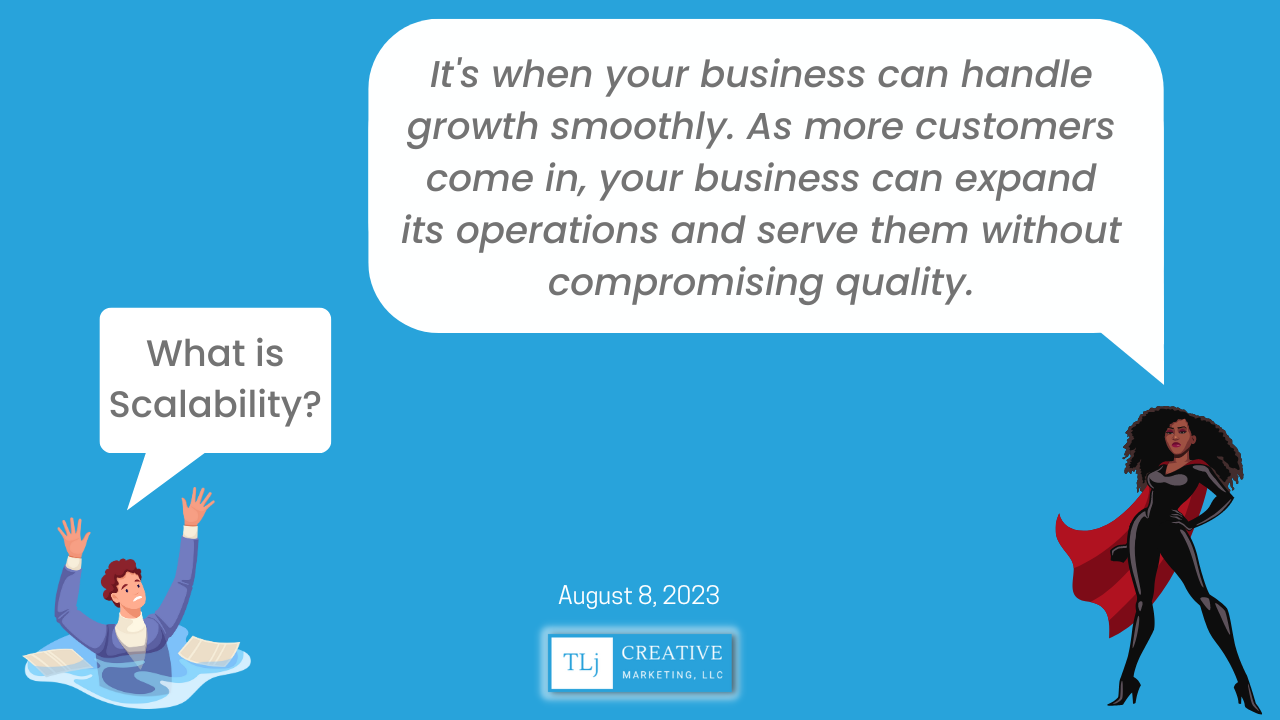In today’s fast-paced and ever-evolving business landscape, scalability is key to ensuring the long-term success of any company. As we move into 2025, more entrepreneurs and established businesses are seeking ways to develop scalable business models that allow for rapid growth without a proportionate increase in costs. Whether you are building a tech-based startup, diving into e-commerce innovations, or expanding a small business idea, understanding and implementing a scalable model can help you meet growing demands while maintaining quality and profitability.
Scalability refers to the ability of a business model to handle increased sales, customers, or production without sacrificing efficiency or quality. The most successful businesses of the future will be those that can adapt to higher demands and capitalize on new market opportunities quickly and efficiently. A scalable business model is one that is designed to grow without requiring a corresponding increase in resources, labor, or costs. In this article, we will explore the importance of building scalable business models, the key components that make a model scalable, and the strategies you can use to design one for your own business.
The Importance of Scalability
Scalability is vital because it enables companies to grow quickly without sacrificing their profit margins or operational effectiveness. A scalable business can adapt to market changes and handle larger volumes of work, leading to sustainable growth over time. For instance, when building a digital business, you may start small but have the potential to expand globally as demand grows, without needing a massive workforce or infrastructure.
In 2025, businesses are also leveraging AI and automation to scale more effectively. Automation not only helps reduce operational costs but also frees up valuable time for teams to focus on higher-level strategies that promote further growth. The ability to scale efficiently is a game-changer for startups, making it possible to serve larger markets, reach more customers, and ultimately, generate more revenue.
A key factor in achieving scalability is designing a business model that enables businesses to tap into existing resources, technology, and networks to grow rapidly. By focusing on scalable strategies and technologies, entrepreneurs can avoid the pitfalls of a rigid, unsustainable business structure. Scalability isn’t just about increasing production; it’s about creating a business that can adapt quickly and remain profitable during periods of rapid growth.

Key Elements of a Scalable Business Model
While scalability may seem like a daunting goal for many entrepreneurs, it can be achieved by focusing on a few core components. These elements form the foundation of a business that can handle growth with minimal friction:
- Technology and Automation: The integration of technology into your business operations is one of the most significant contributors to scalability. AI technologies and tools, in particular, are revolutionizing business operations by automating routine tasks, optimizing processes, and reducing human error. Automation allows businesses to increase their output without requiring proportional increases in labor, making it easier to scale efficiently. A great example is e-commerce businesses. Many e-commerce platforms today use AI and automation to manage inventory, handle customer inquiries, and even personalize recommendations to users. This level of automation ensures that the business can handle a larger volume of customers and transactions while keeping overhead costs low.
- Streamlined Operations: A scalable business model relies on efficient processes. Whether it’s customer service, marketing, or logistics, businesses that streamline their operations can reduce waste, improve productivity, and minimize costs. Tools like digital services and content marketing platforms can help automate and optimize various processes, allowing businesses to serve a larger customer base without a corresponding increase in resource needs. The more streamlined the operations, the less time and effort are spent on managing day-to-day activities. Instead, resources can be redirected towards growth opportunities, customer acquisition, and scaling efforts.
- Business Model Flexibility: Building flexibility into your business model is key to ensuring scalability. Businesses that rely on rigid structures are often slow to adapt to changes in the market or consumer preferences. A scalable model is flexible enough to pivot or adjust strategies as needed. Whether it’s adjusting your startup ideas or embracing new business trends, flexibility allows your business to respond to challenges and seize new opportunities quickly. One example of flexibility in action is the shift to digital-first strategies in response to changing consumer behavior. In 2025, businesses that can easily transition from physical to digital operations or vice versa will have a competitive edge.
- Customer-Centric Approach: Scalability is not just about increasing volume; it’s about doing so in a way that still delivers exceptional customer value. A scalable business model ensures that your product or service can maintain high levels of customer satisfaction, even as you increase production or expand into new markets. Focusing on e-commerce innovations and customer relationship management systems can help you manage a growing customer base effectively. Many successful startups use customer feedback and data-driven insights to fine-tune their offerings, ensuring that as they scale, they continue to meet the needs and expectations of their customers. Paid advertising and targeted social media marketing campaigns can also help attract new customers while maintaining strong relationships with existing ones.
- Strong Brand Identity and Market Positioning: A strong brand identity is essential for scalable growth. As your business grows, it’s important to maintain a clear and consistent message about what your company stands for. Scalability is not just about production capacity—it’s about creating a brand that resonates with customers and can scale alongside your offerings. SEO strategies and content marketing are essential in this context, as they help build visibility and brand recognition across digital platforms. Companies with a well-defined brand identity are better able to enter new markets and expand their customer base while retaining their core values and appeal.

Strategies for Building Scalable Business Models
Now that we’ve covered the core elements that contribute to scalability, let’s take a look at specific strategies that can help businesses achieve scalability in 2025 and beyond:
- Leverage Technology and Automation: Embrace new technologies, particularly AI in business operations and automation tools, to streamline your operations and reduce manual labor. Cloud-based software, data analytics, and machine learning are all great tools to enhance your scalability. By automating repetitive tasks such as customer service, order processing, and inventory management, your business can operate more efficiently and handle greater demand.
- Create Recurring Revenue Streams: Businesses with recurring revenue models have a higher level of scalability because they can forecast revenue more predictably. Subscription services, membership models, and digital services are excellent examples of recurring revenue streams that can grow without significant incremental costs. By building a loyal customer base that continues to pay for your product or service over time, you ensure a more stable and scalable revenue model.
- Outsource and Partner Strategically: Partnering with other businesses or outsourcing non-core activities is another great way to scale. For instance, instead of hiring a large in-house team, startups can leverage outsourcing options for tasks such as IT support, accounting, and marketing. Forming strategic partnerships with other businesses in related industries, such as tech-driven trends, allows you to access resources, expertise, and markets that accelerate your growth.
- Focus on Customer Retention: Acquiring new customers is important, but retaining existing customers is even more crucial for scalable growth. By offering exceptional service, personalized experiences, and loyalty programs, businesses can build a strong customer base that supports long-term success. Engaging with customers through email marketing campaigns and building strong relationships through social media marketing will help maintain brand loyalty and encourage repeat business.
- Expand Your Offerings Gradually: Instead of attempting to offer everything at once, businesses should focus on gradually expanding their product or service offerings. By entering new markets or diversifying offerings in a controlled and strategic manner, you can scale more effectively and reduce the risk of overextending yourself.
Conclusion
Building a scalable business model is essential for success in 2025. Whether you’re in the startup phase or growing your e-commerce business, embracing technology, automation, and flexible processes will help you scale effectively. By designing a business model that can grow without significant increases in resources, you can set your business up for long-term profitability and success.
Incorporating AI and automation, digital services, and paid advertising into your business model will help you increase efficiency and expand your reach, all while keeping costs low. By prioritizing customer-centric strategies and maintaining a strong brand identity, businesses can grow quickly and sustainably, establishing themselves as leaders in their industries.
For entrepreneurs looking to build a scalable business in 2025, the time is now to embrace the opportunities that technology and strategic partnerships offer. Scalability is within your reach, and with the right approach, your business can achieve exponential growth while maintaining operational efficiency.

